
Egyptian desserts tell a story that goes beyond their sweet taste. Sweet treats mark religious occasions while everyday indulgences fill both street corners and upscale restaurants. These confections represent centuries of cultural heritage. The sweet side of Egypt amazed me when I first found their desserts like Qatayef. This Ramadan treat has become so popular that people enjoy it throughout the year.
The sort of thing I love about Egyptian sweets is how they blend influences from Africa, Europe, and Asia into unique creations. Egypt's rich history shines through its desserts, and ingredients like sugar syrup, nuts, and aromatic spices tell stories of ancient trade routes. Basbousa remains one of the most affordable treats that brings families together during weddings and holidays. Zalabia has earned its place as one of the most popular street desserts across the country.
The story of Egyptian sweets is as old as the pyramids themselves. Dating back to ancient times, these desserts have been an integral part of Egyptian culture, often used in religious ceremonies and celebrations. The ancient Egyptians were among the first to use honey as a sweetener, giving birth to a variety of confections that were enjoyed by both royalty and common folk alike.
Egyptian desserts have evolved over centuries, influenced by Greeks, Romans, and Arabs, each adding unique ingredients and techniques. These sweets reflect Egypt's rich cultural heritage and traditions passed down through generations. Today, desserts remain central to social and religious gatherings, shared during weddings, Ramadan, and Eid. More than just food, they symbolize love, hospitality, and unity, bringing families and friends together to create lasting memories and celebrate special moments.
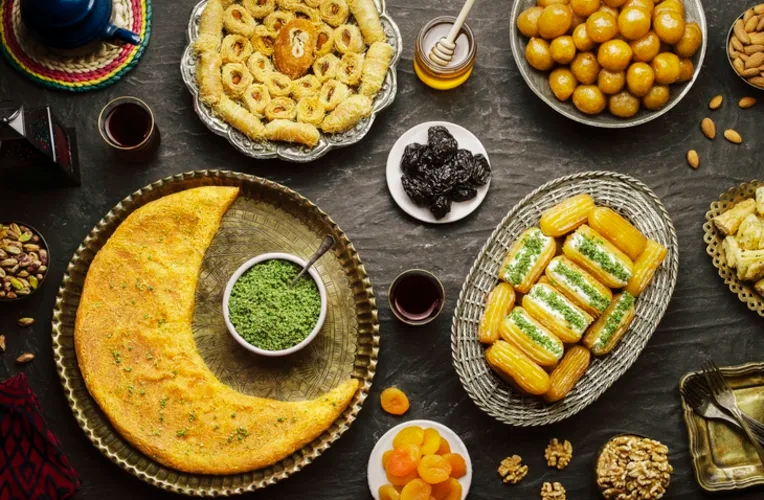
The magic of Egyptian desserts lies in their simple yet flavorful ingredients. A few key components are consistently used across various recipes, each contributing to the unique taste and texture of these sweets. Let's take a closer look at some of these essential ingredients:
Honey: As one of the earliest sweeteners known to humanity, honey is a staple in many Egyptian desserts, providing a natural sweetness and a touch of floral aroma.
Nuts: Almonds, pistachios, and walnuts are commonly used to add crunch and depth of flavor. They often serve as a garnish or are incorporated into the desserts themselves.
Semolina: This coarse wheat flour is a vital component in many Egyptian sweets, such as basbousa and kunafa, lending a distinct texture and hearty flavor.
Dates: Often referred to as the fruit of the desert, dates are a popular ingredient in Egyptian desserts, offering natural sweetness and a chewy texture.
Rose and Orange Blossom Water: These fragrant waters are used to infuse desserts with a delicate floral aroma, adding a touch of elegance and sophistication.
By combining these ingredients in various ways, Egyptians have created a stunning array of sweets, each with its own unique character and charm.
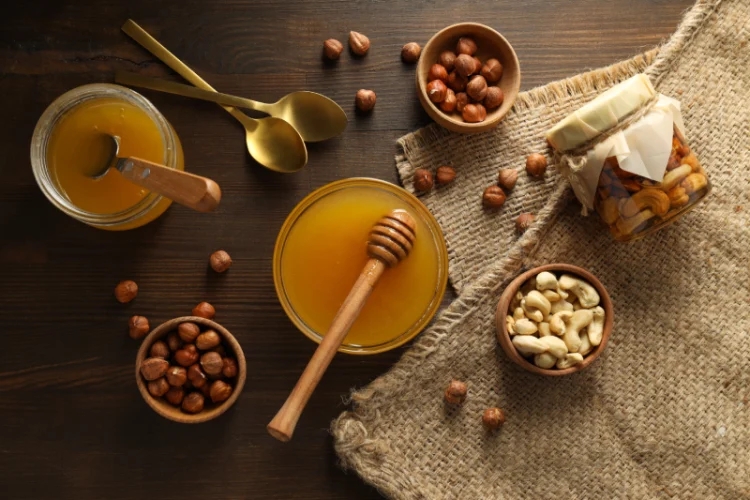
Step into any Egyptian home during a celebration, and you'll discover a treasure trove of desserts that have been lovingly passed down through generations. Each sweet creation carries its own personality, some whisper comfort like a grandmother's embrace, others burst with festive joy that fills entire neighborhoods with their heavenly aromas, an experience often cherished on Egypt tours.
Named after a beloved queen, Om Ali wraps you in warmth like no other dessert can. This regal creation begins with buttery puff pastry or traditional Egyptian flatbread, torn into generous pieces and nestled with toasted nuts and plump raisins. When hot, creamy milk cascades over this mixture, magic happens, the bread absorbs every drop while maintaining delightful pockets of texture. The finest Om Ali relies on rich, farm-fresh dairy and delicate palmiers that create a golden, crackling crown while preventing that dreaded sogginess.
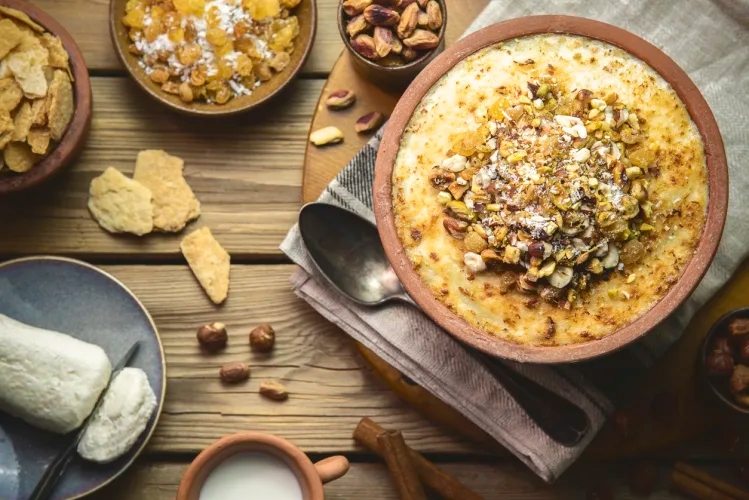
Walk past any Egyptian bakery, and the sweet perfume of Basbousa will beckon you inside. This humble yet extraordinary cake speaks the language of celebration in every Egyptian household. Coarse semolina flour gives it that distinctive, slightly grainy bite that perfectly captures the floral syrup that soaks through every morsel. The addition of creamy yogurt creates an impossibly moist crumb, while blanched almonds or vibrant green pistachios crown each square like tiny jewels. What makes Basbousa truly special is its democratic nature, rich and poor alike can afford this sweet joy.
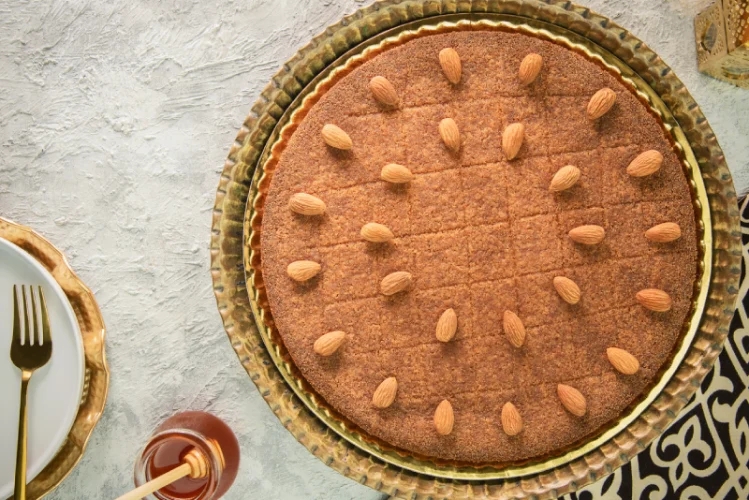
These golden orbs of happiness bubble and dance in hot oil until they achieve that perfect marriage of crispy exterior and cloud-soft interior. Street vendors across Egypt have perfected the art of Zalabya, creating spheres so perfectly round they seem blessed by ancient gods. The moment they emerge from their oil bath, they receive a generous baptism of aromatic syrup or a delicate dusting of powdered sugar that melts on your tongue like sweet snow.
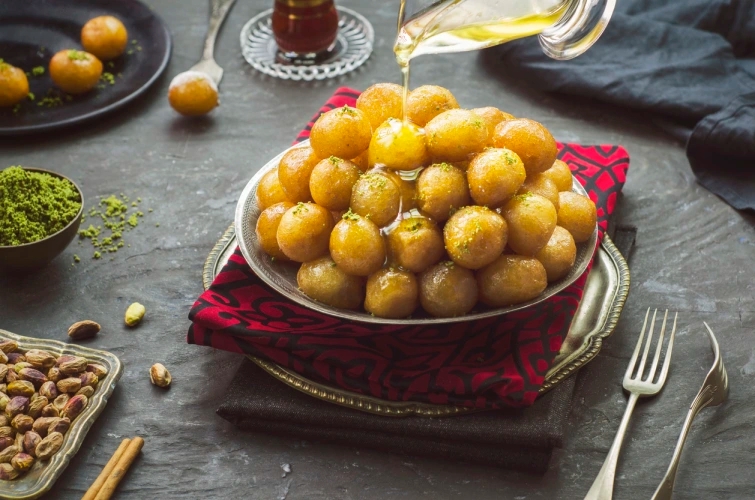
Comfort food doesn't get more soul-satisfying than this silky rice pudding that has graced Egyptian tables since pharaonic times. Each spoonful delivers creamy perfection, with tender rice grains suspended in milk that's been slowly cooked to velvet smoothness. Unlike many variations, Egyptian Roz Bel Laban favors vanilla's gentle embrace over rose water's floral intensity. Special dairy shops throughout Egypt's cities take pride in their versions, serving this timeless treat in small glass bowls that showcase its pristine ivory color.

When Ramadan arrives, these half-moon beauties appear like clockwork in every Egyptian kitchen. The pancakes themselves are works of art cooked only on one side, leaving the other soft and pliable for folding. Some embrace sweet cheese fillings that melt into creamy rivers, while others cradle spiced nuts that crunch between your teeth. The most ethereal version, Qatayef Asafiri, holds clouds of thick cream that seem to float on your palate.
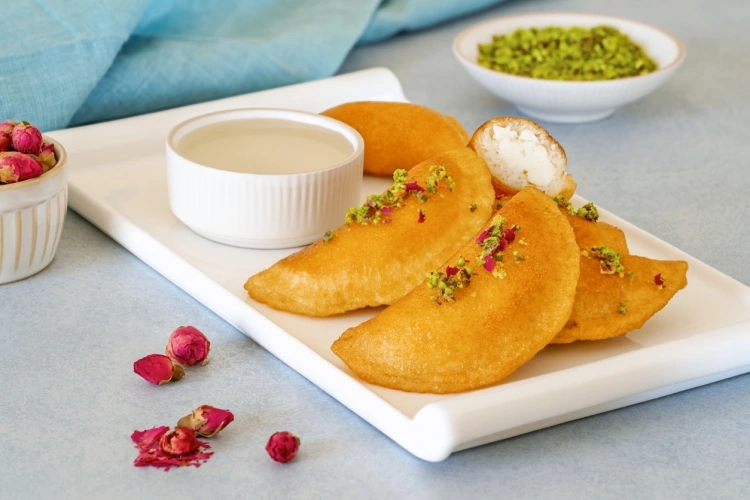
Though Kunafa journeyed to Egypt from Palestine, it has claimed a permanent place in Egyptian hearts. Imagine thousands of golden threads woven into edible silk, then layered with sweet cheese or cream and bathed in perfumed syrup. Each bite delivers a symphony of textures, the crispy shredded pastry contrasting beautifully with molten, creamy centers. Modern Egyptian bakers have embraced creativity, stuffing their Kunafa with everything from rich Nutella to tropical mango, proving that tradition and innovation can dance together beautifully.
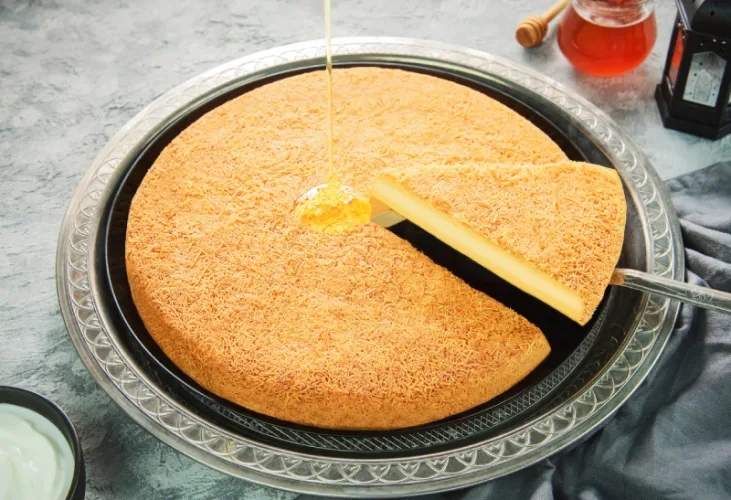
Baklava is a layered pastry made of phyllo dough, chopped nuts, and sweet syrup or honey. Though it originates from the Ottoman Empire, it's widely enjoyed in Egypt. Its rich, flaky texture and sweet, nutty filling make it a luxurious dessert often served during special occasions.
Baklava is a layered pastry made of phyllo dough, chopped nuts, and sweet syrup or honey. Though it originates from the Ottoman Empire, it's widely enjoyed in Egypt. Its rich, flaky texture and sweet, nutty filling make it a luxurious dessert often served during special occasions.
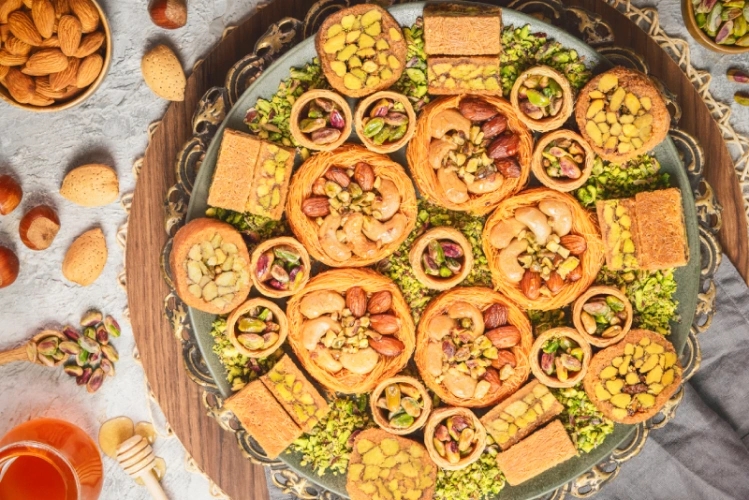
Meshabek is a deep-fried, coiled dessert similar to jalebi, made from flour batter and soaked in syrup. Crunchy on the outside and soaked with sweetness inside, it’s a street food favorite in Egypt. Often sold by vendors, it’s enjoyed by kids and adults alike for its fun shape and sugary flavor.
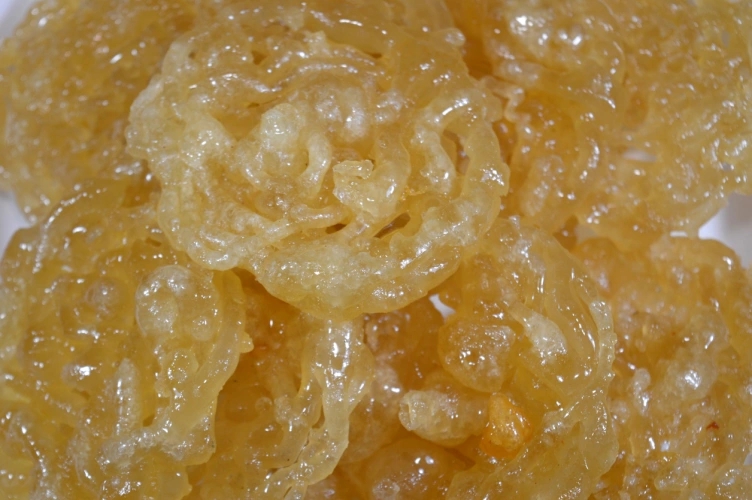
Mahalabia is a smooth and creamy Egyptian milk pudding made with milk, sugar, and cornstarch, delicately flavored with rose or orange blossom water. Often chilled and topped with crushed nuts, it’s a light, refreshing dessert served during holidays, family gatherings, and festive meals.

Halawet El Mouled is a variety of traditional sweets made specifically for the celebration of the Prophet Muhammad’s birthday. It includes nut bars, sesame seed sweets, and sugar candies shaped in festive designs. These sweets are both a religious and cultural tradition cherished across generations.
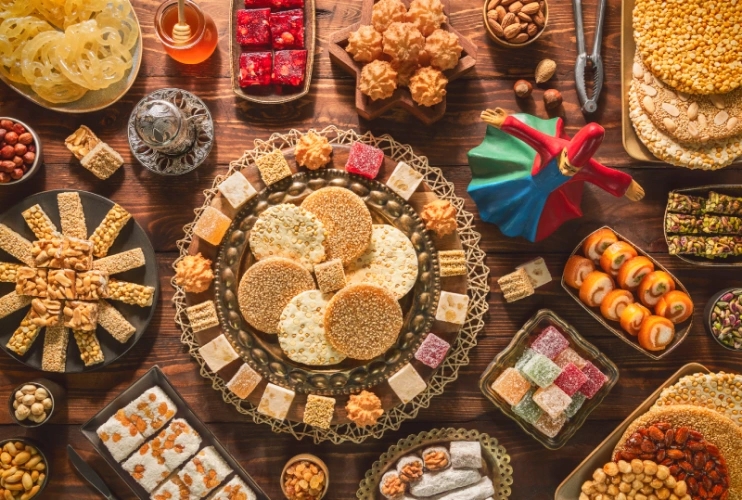
Cairo's dessert scene pulses with creative energy as imaginative pastry chefs honor their ancestors while embracing bold new possibilities. Walk through Zamalek's trendy cafés or New Cairo's upscale patisseries, and you'll witness a delicious revolution where beloved family recipes dance with contemporary flavors and Instagram-worthy presentations.
Kunafa has become a creative canvas for Egypt’s dessert scene. Once filled with traditional cream or cheese, it now features mango chunks bursting with tropical flavor or rich Nutella that melts into chocolate bliss. Each Ramadan, new versions emerge, drawing crowds across Cairo. Mango Kunafa captures Egypt’s love for the fruit with crispy pastry and juicy mango, while Nutella Kunafa, often shaped into spirals with whipped cream and toasted hazelnuts, has become a modern favorite.
French flair transforms Om Ali into a luxurious dessert with flaky croissants replacing traditional bread. Toasted to golden perfection, the croissants are soaked in vanilla cream with a hint of orange zest. Each spoonful offers buttery layers, creamy richness, and crunchy pistachios. This elegant twist on Egypt’s beloved comfort food is now a signature treat at upscale hotels, where pastry chefs elevate its humble roots into a warm, indulgent experience perfect for chilly evenings.
Cairo’s street food scene reinvents Zalabya with gourmet flair. These crispy, syrup-soaked fried balls now come drizzled in glossy chocolate, caramel, or rich Nutella. Some vendors infuse orange blossom water for an aromatic twist that entices passersby. Despite the modern toppings, the magic remains: golden, crunchy outsides yielding to soft, airy centers. It’s a perfect fusion of tradition and innovation, turning a humble treat into a delicious celebration of past and present.
Cairo’s trendiest chefs blend tradition and innovation with desserts that surprise and delight. Mango Tres Leches fuses Mexican soaked cake with Egypt’s mango love, while Sad El Hanak gets a modern, artistic twist. Red velvet cake atop crispy Kunafa and Atayef filled with cream cheese frosting evoke global flavors with Egyptian flair. These bold creations pay homage to heritage while celebrating the cosmopolitan energy that defines Egypt’s ever-evolving dessert scene.
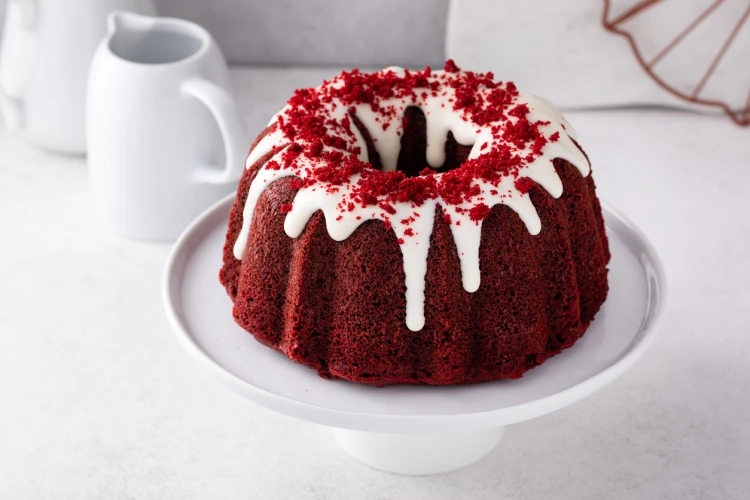
If you're eager to experience the authentic flavors of Egyptian desserts, there are several places where you can indulge in these delectable treats. Whether you're in Egypt or exploring a city with a vibrant Egyptian community, here's where you can find some of the best sweets:
Local Bakeries and Sweet Shops: In Egypt, cities like Cairo and Alexandria boast numerous bakeries specializing in traditional sweets. These establishments offer a wide range of confections, from kunafa to basbousa, ensuring you get an authentic taste of Egyptian culture.
Middle Eastern Restaurants: Many Middle Eastern restaurants around the world include Egyptian desserts on their menus, providing an opportunity to savor these treats without traveling far from home such as: El Fishawy in Cairo, Naguib Mahfouz Café in Khan El Khalili, Cairo.
Online Stores: For those who prefer convenience, several online retailers offer a selection of Egyptian sweets that can be delivered straight to your doorstep. This option allows you to enjoy authentic flavors no matter where you are.
By exploring these venues, you'll be able to experience the rich tapestry of flavors that define Egyptian desserts, all while supporting the artisans and businesses that keep these traditions alive.
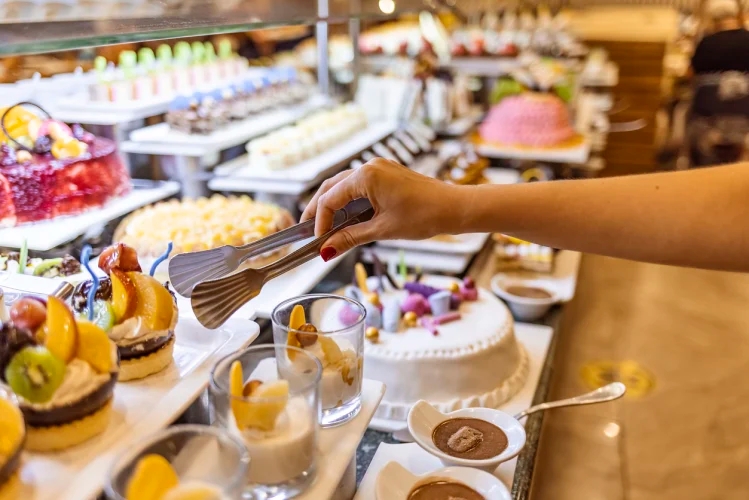
The experience of enjoying Egyptian desserts can be further enhanced by pairing them with complementary beverages. Here are some delightful combinations to try:
Mint Tea: This refreshing drink complements the sweetness of desserts like basbousa and baklava, offering a perfect balance of flavors.
Turkish Coffee: With its bold, rich taste, Turkish coffee pairs beautifully with nutty desserts such as kunafa and maamoul.
Karkade (Hibiscus Tea): This tangy, vibrant tea is a refreshing accompaniment to syrup-soaked treats like zalabya and balah el sham.
Sahlab: A warm, creamy beverage made from orchid root, sahlab is a delightful pairing for creamy desserts such as roz bel laban and om ali.
By experimenting with these pairings, you'll discover new dimensions of flavor and create a truly memorable culinary experience.

Ramadan transforms Egypt into a dessert wonderland. Streets fill with the aroma of Qatayef pancakes sizzling on griddles, while Kunafa shops work overtime to satisfy the evening iftar rush. The anticipation builds throughout the day, making that first sweet bite after sunset taste like pure joy.
Eid celebrations bring their own confectionery traditions, Ma'amoul cookies filled with dates and nuts appear in every household, their delicate molds creating edible works of art. Yet some treasures like Basbousa and Zalabya refuse to be confined to seasons, gracing Egyptian tables year-round with their timeless appeal. Rice pudding, that humble comfort dessert, remains a constant companion regardless of calendar or celebration, always ready to offer its creamy embrace.
As we conclude our journey through the world of Egyptian desserts, I hope you've gained a deeper appreciation for the rich history, diverse flavors, and cultural significance that define these sweets. From traditional favorites to modern innovations, Egyptian desserts offer a tantalizing glimpse into a culinary tradition that has stood the test of time.
Whether you're savoring these treats in the heart of Egypt or recreating them at home, Egyptian sweets invite you to indulge your senses and embark on a delightful adventure. When planning your visit, consider joining Egypt tours to experience these desserts firsthand and share the joy with others.
Q1. What are some popular traditional Egyptian desserts?
Popular Egyptian desserts include basbousa (semolina cake), konafa (sweet shredded pastry), om ali (Egyptian bread pudding), and baklava.
Q2. What ingredients are commonly used in Egyptian desserts?
Common ingredients include semolina, nuts, honey, sugar syrup, phyllo pastry, dates, and spices like cinnamon and rosewater.
Q3. Are Egyptian desserts influenced by other cultures?
Yes, Egyptian desserts have been influenced by Greek, Roman, and Arab cuisines, which introduced new ingredients and techniques over centuries.
Q4. When are Egyptian desserts typically served?
They are often enjoyed during religious holidays like Ramadan and Eid, as well as weddings, family gatherings, and festive celebrations.
Q5. Can I find authentic Egyptian desserts outside of Egypt?
Yes, many Middle Eastern restaurants worldwide offer Egyptian desserts, and some specialty shops even sell them.
Q6. Are Egyptian desserts usually very sweet?
Egyptian desserts tend to be rich and sweet, often soaked in sugar syrup or honey, balancing sweetness with nuts and spices.
Q7. Is it possible to make Egyptian desserts at home?
Many recipes for Egyptian desserts are simple and can be made with accessible ingredients, allowing you to enjoy these treats at home.
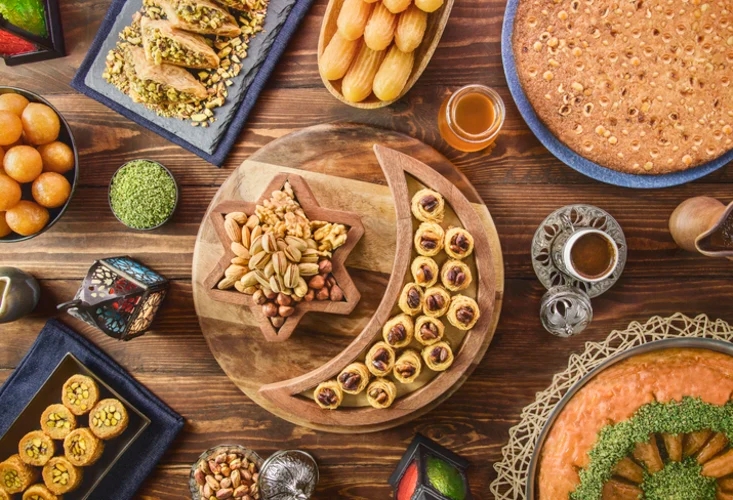

© Copyright 2025 Get Egypt Tour. All rights reserved.